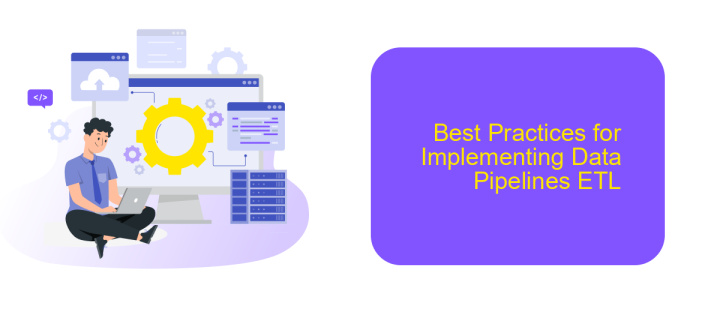Data Pipelines ETL
Data pipelines and ETL (Extract, Transform, Load) processes are essential components in modern data management. They facilitate the seamless flow of data from various sources to destinations, ensuring it is clean, transformed, and ready for analysis. This article delves into the fundamentals of data pipelines and ETL, highlighting their importance, key components, and best practices for efficient data handling.
Introduction to Data Pipelines ETL
Data pipelines are essential for efficiently processing and transferring data from one system to another. ETL (Extract, Transform, Load) is a critical component of these pipelines, ensuring that data is accurately extracted from various sources, transformed into a suitable format, and loaded into a target system for analysis or storage.
- Extract: This phase involves retrieving data from different sources such as databases, APIs, and flat files.
- Transform: In this step, the data is cleaned, enriched, and transformed into a format that is suitable for analysis or storage.
- Load: The final phase involves loading the transformed data into a target system, such as a data warehouse or a business intelligence platform.
Tools like ApiX-Drive can simplify the integration process by automating data transfers between various applications and services. ApiX-Drive allows users to set up integrations without coding, ensuring that data pipelines remain efficient and reliable. This automation helps organizations focus on data analysis rather than the complexities of data integration.
ETL Process: Extraction, Transformation, and Loading

The ETL process, which stands for Extraction, Transformation, and Loading, is a crucial component in data management. During the extraction phase, data is collected from various sources such as databases, APIs, and flat files. This step is essential for gathering raw data that will be processed and analyzed. Services like ApiX-Drive can simplify this step by automating the extraction from multiple sources, ensuring data consistency and reducing manual effort.
In the transformation phase, the extracted data undergoes various operations to convert it into a suitable format for analysis. This can include data cleaning, normalization, and enrichment. The final phase, loading, involves moving the transformed data into a target system such as a data warehouse or a data lake. This ensures that the data is readily accessible for business intelligence tools and analytics. Effective ETL processes are vital for maintaining data integrity and facilitating accurate decision-making.
Benefits and Challenges of Using Data Pipelines ETL

Data Pipelines ETL (Extract, Transform, Load) offer significant benefits for organizations looking to streamline their data processing and analytics workflows. These pipelines automate the extraction of data from various sources, its transformation into a suitable format, and its loading into a destination system, such as a data warehouse or analytics platform. This automation leads to increased efficiency, consistency, and the ability to handle large volumes of data in real-time.
- Efficiency: Automates repetitive tasks, reducing manual intervention and errors.
- Scalability: Capable of handling large datasets and scaling with business needs.
- Consistency: Ensures data integrity through standardized processes.
- Real-time Processing: Enables timely insights and decision-making.
- Integration: Tools like ApiX-Drive facilitate seamless integration between various data sources and destinations.
Despite these advantages, implementing Data Pipelines ETL comes with its challenges. Setting up and maintaining these pipelines can be complex and resource-intensive. Ensuring data quality and managing schema changes require continuous monitoring and adjustments. Additionally, security concerns must be addressed to protect sensitive data. However, with the right tools and strategies, such as leveraging ApiX-Drive for integration, these challenges can be effectively managed.
Best Practices for Implementing Data Pipelines ETL

Implementing efficient ETL data pipelines requires careful planning and adherence to best practices to ensure seamless data flow and integrity. One of the key aspects is to design scalable and robust pipelines that can handle varying data volumes and complexities.
Data validation and error handling are crucial to maintain data quality. Implementing thorough validation checks at each stage of the pipeline helps in identifying and rectifying errors early. Additionally, automated monitoring and alerting systems can proactively address any issues that arise.
- Ensure scalability and flexibility in pipeline design.
- Implement comprehensive data validation and error handling mechanisms.
- Utilize automated monitoring and alerting tools.
- Leverage integration platforms like ApiX-Drive for seamless data connectivity.
For integrating multiple data sources and services, tools like ApiX-Drive can significantly simplify the process. ApiX-Drive allows for easy configuration and management of data integrations, ensuring that your ETL pipelines remain efficient and reliable. By following these best practices, you can build robust ETL pipelines that support your data-driven initiatives effectively.
Conclusion
In conclusion, building efficient and scalable data pipelines for ETL processes is crucial for any data-driven organization. The ability to seamlessly extract, transform, and load data allows businesses to make informed decisions and maintain a competitive edge. By leveraging the right tools and technologies, such as cloud-based platforms and automation frameworks, organizations can significantly streamline their data operations and reduce manual intervention.
Moreover, integrating services like ApiX-Drive can further enhance the efficiency of your data pipelines by automating data transfers between various applications and systems. This not only saves time but also minimizes the risk of errors, ensuring that your data is accurate and up-to-date. As the volume of data continues to grow, investing in robust ETL solutions will be increasingly important for sustaining business growth and innovation.
FAQ
What is an ETL data pipeline?
Why is ETL important for data management?
What are the main components of an ETL data pipeline?
How can I automate my ETL data pipeline?
What challenges might I face when setting up an ETL data pipeline?
Apix-Drive is a universal tool that will quickly streamline any workflow, freeing you from routine and possible financial losses. Try ApiX-Drive in action and see how useful it is for you personally. In the meantime, when you are setting up connections between systems, think about where you are investing your free time, because now you will have much more of it.

